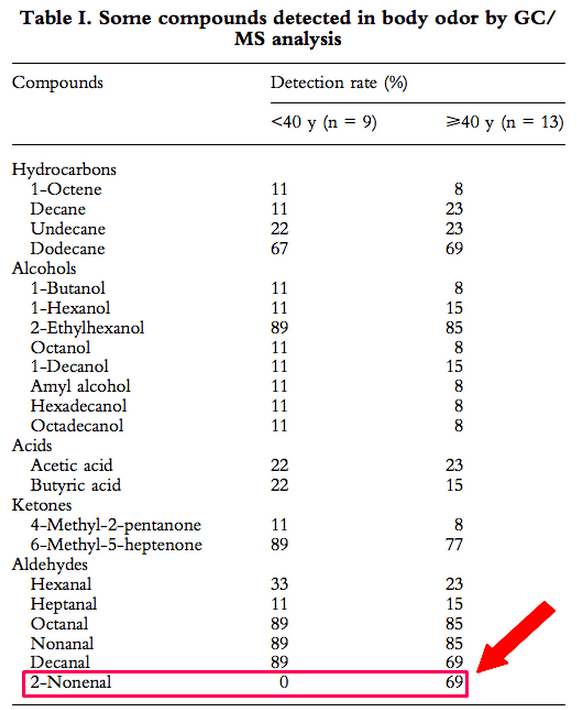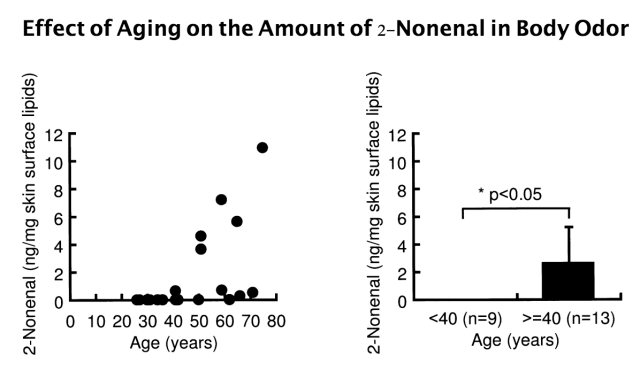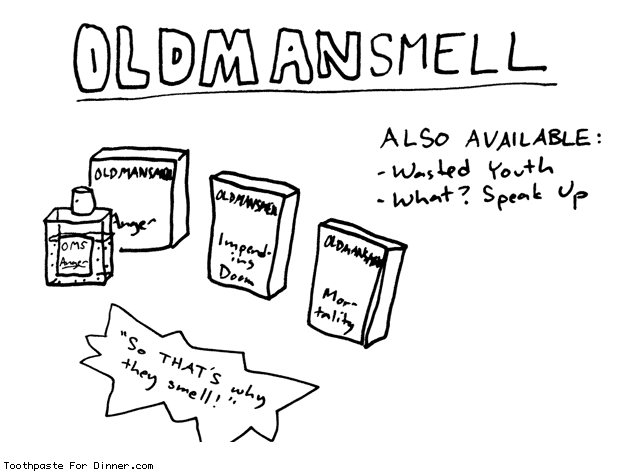
Photo via Petras Gagilas
![]()
Do elderly folk have a distinctly unique body odor?
According to claims on the Internet, they do. It’s not necessarily a bad one — observers describe it as everything from “grassy” to “stale” — but it’s supposedly there, permeating retirement home bridge games, and wafting through your grandfather’s bedroom.
Is this apparent “Old Person Smell” just a form of ageism, or is there any actual science behind it?
“There’s absolutely a particular smell we associate with aging, but there isn’t one specific cause,” writes physician Eric Shapira. “It’s a combination of many different things that are all associated with what happens to the body as we get older.”
A quick scan of senior living websites yields a number of these factors:
1. Living for long, stationary periods of time in closed quarters
2. Molds, mildews, and dander (dead skin) build up due to lack of house cleaning
3. Decline in the ability to do laundry on a regular basis
4. Periodontal disease due to less ambitious teeth cleaning
5. Dehydration, dry mouth
6. Less frequent bathing
Generally, as people age, their sense of smell also declines, and they may be unaware of the odors they emit. A NCBI study cites that “more than 75% of people over the age of 80 years have evidence of major olfactory impairment, and that olfaction declines considerably after the seventh decade.”
But there is another element at play when considering how our scents change over time.
In a 2001 study published in The Journal of Investigative Dermatology, researchers discovered that what we categorize as “Old People Smell” is likely due to one chemical compound: 2-noneral.
For their study, the scientists gathered a control group of 22 healthy individuals — 13 males, and 9 females — ranging in age from 26 to 75 years old. Each person bathed with odorless soap and shampoo, and was then given a T-shirt to wear (washed and prepared in such a way that no odor was detectable) for three consecutive nights. At the end of this period, swatches of the shirts were cut out examined for various chemical compounds and lipids.
Here’s what they found (the first column represents subjects under the age of 40, and the second, subjects over the age of 40):

Source: ‘2-Nonenal Newly Found in Human Body Odor Tends to Increase with Aging’ (Haze, Gozu, Nakamura, Kohno, Sawano, Ohta, Yamazaki)
While most compounds showed little fluctuation based on age, 2-nonenal — a colorless liquid commonly found in stale beer and buckwheat — went from being entirely non-existent in subjects under 40, to being one of the most detected compounds in those over 40.
And why does this 2-nonenal present itself only in the elderly? The researchers stipulate that the omega-7 unsaturated fatty acids also present in elderly’s shirts breaks down to create this compound — most likely because of “age-related changes to metabolism.”
The unsaturated aldehyde was especially prevalent in those over the age of 60. The oldest subject in the group, write the researchers, produced more than three times the amount of 2-nonenal as those who were middle-aged:

Source: ‘2-Nonenal Newly Found in Human Body Odor Tends to Increase with Aging’ (Haze, Gozu, Nakamura, Kohno, Sawano, Ohta, Yamazaki)
This study seems to establish “Old Person Smell” may be scientifically valid in its uniqueness — but where do the negative perceptions of how the elderly smell originate?
In another study conducted by Monell Chemical Senses Center, 44 subjects were divided into three age groups — “young” (20-30 years old), “middle-aged” (45-55), and “elderly” (75-95) — and then asked to sleep in the same T-shirt for 5 consecutive nights. The T-shirts, which were lined with absorbent nursing pads, were put in jars to capture the scents, and blindly smelled by 41 volunteers. These volunteers were then asked to rate the smell in both “intensity” and “pleasantness.” Scientific American enumerated on the results:
“Contrary to common complaints about “old people smell,” the volunteers’ blind ratings revealed that they found elderly people’s odors both less intense and less unpleasant than odors from young and middle-aged people. Middle-aged man musk took top prize for intensity and unpleasantness, whereas volunteers rated the odors of middle-aged women most pleasant and whiffs of old man as least intense.”
Though the odors of the elderly were not perceived to be bad smelling, they did prove to be uniquely identifiable: in the same blind test, volunteers were asked to label each smell as that of a young, middle-aged, or elderly person — and they were, with shocking accuracy, able to correctly pin the elderly subjects’ T-shirts.
“I think it’s true that old people smell a certain way,” the study’s lead scientist stated, “but the idea that the smell is negative may largely be social stigma.”
Nowhere is this more true than in Japan, where the 2-nonenal study was conducted: there, “Old Man Smell,” called “kareishu,” is not only perceived negatively, but is considered insulting. The whole concept that the elderly smell bad was, of course, an invention of Shiseido Research Centre, an affiliate of Japanese cosmetics giant Shiseido.
Over the course of many years, Japanese cosmetics companies have convinced the elderly that they smell, made them feel guilty about it, and proceeded to pepper them with “remedies” — everything from deodorant-coated suits to “Otoko Kaoru” (or, “Man Smell”), a “gum that causes fragrance to emanate from skin pores when chewed.”

Source: Toothpaste For Dinner
It’s become something of a meme to ridicule the elderly for their unique scent, but the reality is that humans of all ages generally smell bad.
While we fancy ourselves cleanly and fresh-scented, we’re far more pungent than the majority of mammals in the animal kingdom. We emit, with generous frequency, a combination of proteins, amino acids, lactic acids, ammonia, urea, and water — the result of which isn’t often pleasant.
But alas, this collective stink does not unite us, and older folks continue to bare the brunt of our scent discrimination.
![]()
This post was written by Zachary Crockett. You can follow him on Twitter here.
To get occasional notifications when we write blog posts, please sign up for our email list.



